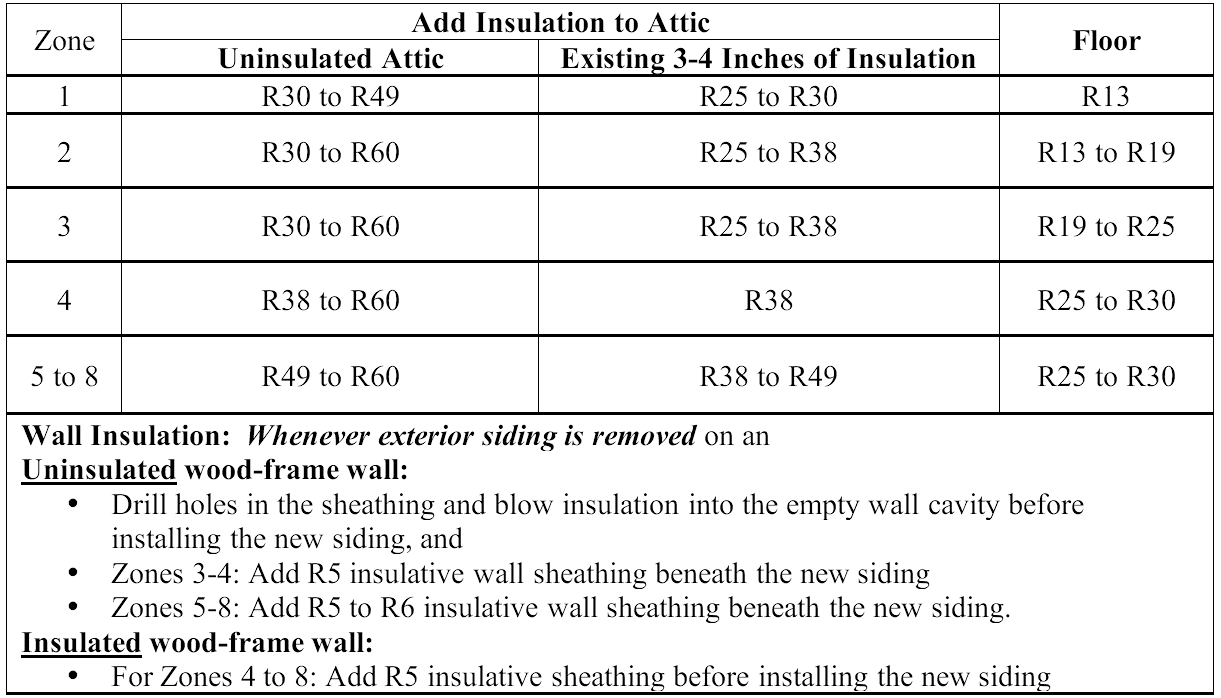Which Kind of Insulation is Best?
Based on our email, this is one of the most popular questions homeowners ask before buying insulation. The answer is that the 'best' type of insulation depends on:
- how much insulation is needed,
- the accessibility of the insulation location,
- the space available for the insulation,
- local availability and price of insulation, and
- other considerations unique to each purchaser.
Whenever you compare insulation products, it is critical that you base your comparison on equal R-values.
What Is an R-Value?
Insulation is rated in terms of thermal resistance, called R-value, which indicates the resistance to heat flow. The higher the R-value, the greater the insulating effectiveness.The R-value of thermal insulation depends on the type of material, its thickness, and its density. In calculating the R-value of a multi-layered installation, the R-values of the individual layers are added.
The effectiveness of an insulated ceiling, wall or floor depends on how and where the insulation is installed.
- Insulation which is compressed will not give you its full rated R-value. This can happen if you add denser insulation on top of lighter insulation in an attic. It also happens if you place batts rated for one thickness into a thinner cavity, such as placing R-19 insulation rated for 6 1/4 inches into a 5 1/2 inch wall cavity.
- Insulation placed between joists, rafters, and studs does not retard heat flow through those joists or studs. This heat flow is called thermal bridging. So, the overall R-value of a wall or ceiling will be somewhat different from the R-value of the insulation itself. That is why it is important that attic insulation cover the tops of the joists and that is also why we often recommend the use of insulative sheathing on walls. The short-circuiting through metal framing is much greater than that through wood-framed walls; sometimes the insulated metal wall's overall R-value can be as low as half the insulation's R-value.
Reading the Label
No matter what kind of insulation you buy, check the information on the product label to make sure that the product is suitable for the intended application. To protect consumers, the Federal Trade Commission has very clear rules about the R-value label that must be placed on all residential insulation products, whether they are installed by professionals, or whether they are purchased at a local supply store. These labels include a clearly stated R-value and information about health, safety, and fire-hazard issues. Take time to read the label BEFORE installing the insulation. Insist that any contractor installing insulation provide the product labels from EACH package (which will also tell you how many packages were used). Many special products have been developed to give higher R-values with less thickness. On the other hand, some materials require a greater initial thickness to offset eventual settling or to ensure that you get the rated R-value under a range of temperature conditions.
Insulation Product Types
Some types of insulation require professional installation, and others you can install yourself. You should consider the several forms of insulation available, their R-values, and the thickness needed. The type of insulation you use will be determined by the nature of the spaces in the house that you plan to insulate. For example, since you cannot conveniently "pour" insulation into an overhead space, blankets, spray-foam, board products, or reflective systems are used between the joists of an unfinished basement ceiling. The most economical way to fill closed cavities in finished walls is with blown-in insulation applied with pneumatic equipment or with sprayed-in-place foam insulation.
The different forms of insulation can be used together. For example, you can add batt or roll insulation over loose-fill insulation, or vice-versa. Usually, material of higher density (weight per unit volume) should not be placed on top of lower density insulation that is easily compressed. Doing so will reduce the thickness of the material underneath and thereby lower its R-value. There is one exception to this general rule: When attic temperatures drop below 0°F, some low-density, fiberglass, loose-fill insulation installations may allow air to circulate between the top of your ceiling and the attic, decreasing the effectiveness of the insulation. You can eliminate this air circulation by covering the low-density, loose-fill insulation with a blanket insulation product or with a higher density loose-fill insulation.
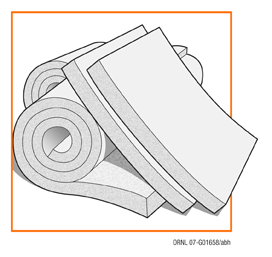
Blankets, in the form of batts or rolls, are flexible products made from mineral fibers, including fiberglass or rock wool. They are available in widths suited to standard spacings of wall studs and attic or floor joists. They must be hand-cut and trimmed to fit wherever the joist spacing is non-standard (such as near windows, doors, or corners), or where there are obstructions in the walls (such as wires, electrical outlet boxes, or pipes). Batts can be installed by homeowners or professionals. They are available with or without vapor-retarder facings. Batts with a special flame-resistant facing are available in various widths for basement walls where the insulation will be left exposed.
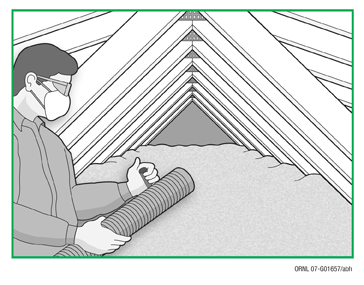
Blown-in loose-fill insulation includes cellulose, fiberglass, or rock wool in the form of loose fibers or fiber pellets that are blown using pneumatic equipment, usually by professional installers. This form of insulation can be used in wall cavities. It is also appropriate for unfinished attic floors, for irregularly shaped areas, and for filling in around obstructions.
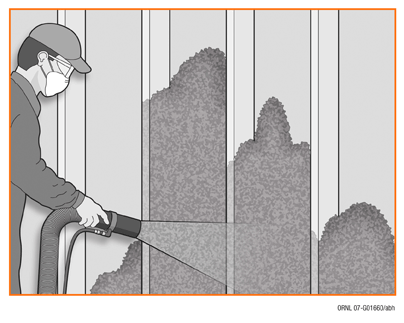
In the open wall cavities of a new house, cellulose and fiberglass fibers can also be sprayed after mixing the fibers with an adhesive or foam to make them resistant to settling.
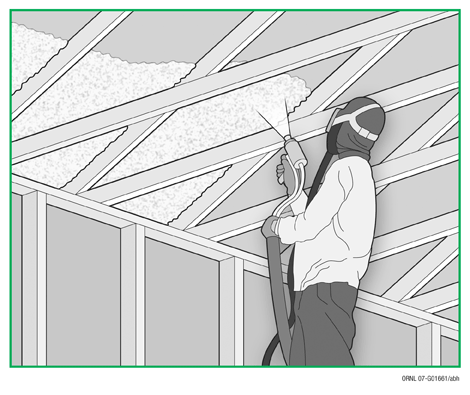
Foam insulation can be applied by a professional using special equipment to meter, mix, and spray the foam into place. Polyisocyanurate and polyurethane foam insulation can be produced in two forms: open-cell and closed-cell. In general, open-celled foam allows water vapor to move through the material more easily than closed-cell foam. However, open-celled foams usually have a lower R-value for a given thickness compared to closed-cell foams. So, some of the closed-cell foams are able to provide a greater R-value where space is limited.
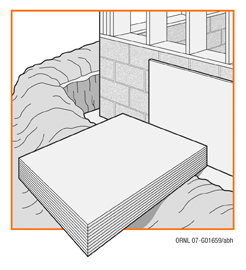
Rigid insulation is made from fibrous materials or plastic foams and is produced in board-like forms and molded pipe coverings. These provide full coverage with few heat loss paths and are often able to provide a greater R-value where space is limited. Such boards may be faced with a reflective foil that reduces heat flow when next to an air space. Rigid insulation is often used for foundations and as an insulative wall sheathing.
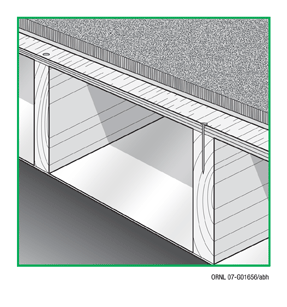
Reflective insulation systems are fabricated from aluminum foils with a variety of backings such as kraft paper, plastic film, polyethylene bubbles, or cardboard. The resistance to heat flow depends on the heat flow direction, and this type of insulation is most effective in reducing downward heat flow. Reflective systems are typically located between roof rafters, floor joists, or wall studs. If a single reflective surface is used alone and faces an open space, such as an attic, it is called a radiant barrier.
Radiant barriers are installed in buildings to reduce summer heat gain and winter heat loss. In new buildings, you can select foil-faced wood products for your roof sheathing (installed with the foil facing down into the attic) or other locations to provide the radiant barrier as an integral part of the structure. For existing buildings, the radiant barrier is typically fastened across the bottom of joists, as shown in this drawing. All radiant barriers must have a low emittance (0.1 or less) and high reflectance (0.9 or more).
More Information on R-Value
About This Fact Sheet
The DOE Insulation Fact Sheet offers helpful advice on insulating your existing house and supplies information you need to know if you are building a new home. It is available in PDF Version also.
The insulation levels recommended in this Fact Sheet were chosen based on a life-cycle cost analysis. This analysis includes many assumptions about system efficiencies, and what rate of return you would like to earn on your investment. If you want to find out more about how the recommended insulation levels were chosen, please see the Supporting Documentation.
2002 Addendum to Supporting DocumentationSupporting Documentation
Prepared by
Oak Ridge National Laboratory
Oak Ridge, Tennessee 37831-6283
managed by
UT-Battelle LLC
for the
U.S. DEPARTMENT OF ENERGY
under contract DE-AC05-00OR22725
for
The Building Technology Program
Office of Energy Efficiency and Renewable Energy
1000 Independence Avenue, SW
Washington, DC 20585-0121
Remember to buy the insulation based on the recommended R-value, and to check the product label to determine the insulation's proper thickness.
For more information:
Contact the facility manager for Building Envelope Research:
Andre O. Desjarlais
Oak Ridge National Laboratory
P. O. Box 2008, MS 6070
Oak Ridge, TN 37831-6070
E-mail: desjarlaisa@ornl.gov
Where to Insulate

Figure 2. Insulation Recommendations for New Wood-Framed Houses
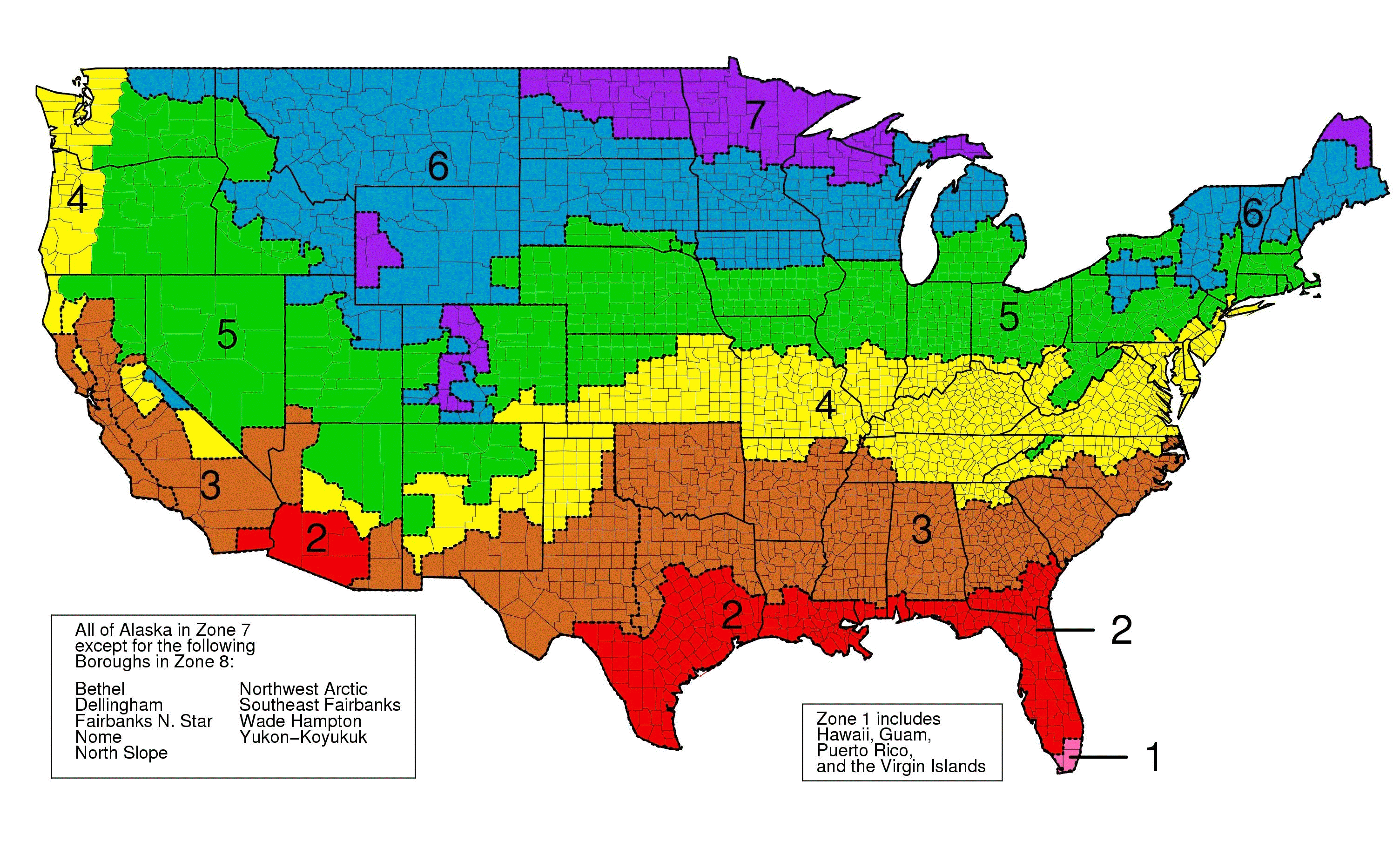
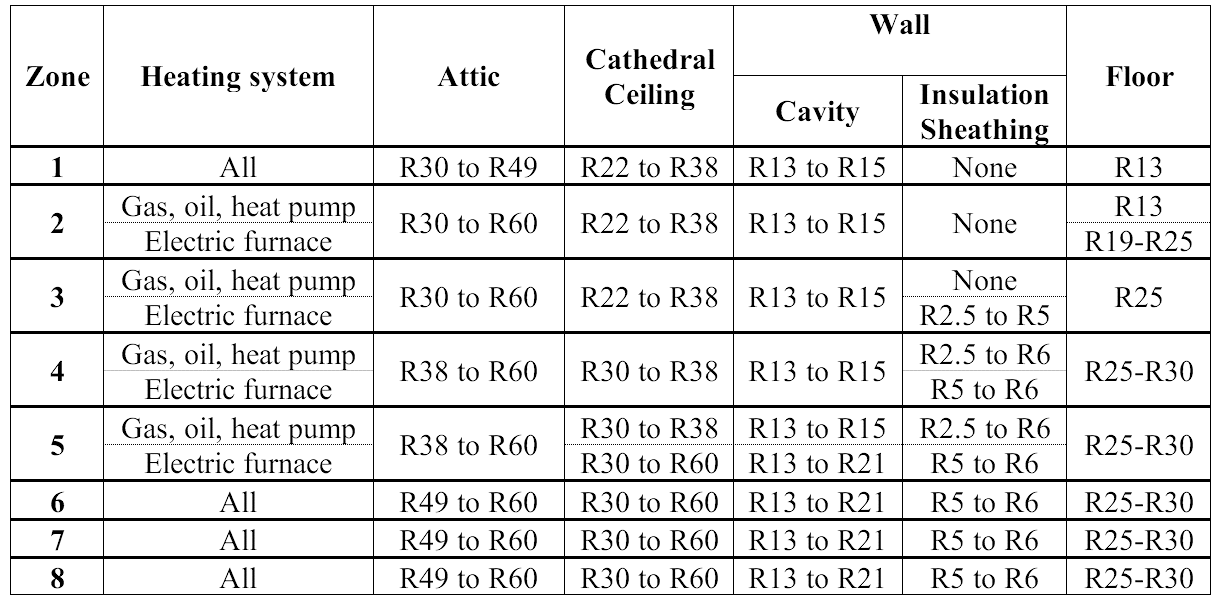
Figure 3. Insulation Recommendations for Existing Wood-Framed Houses

